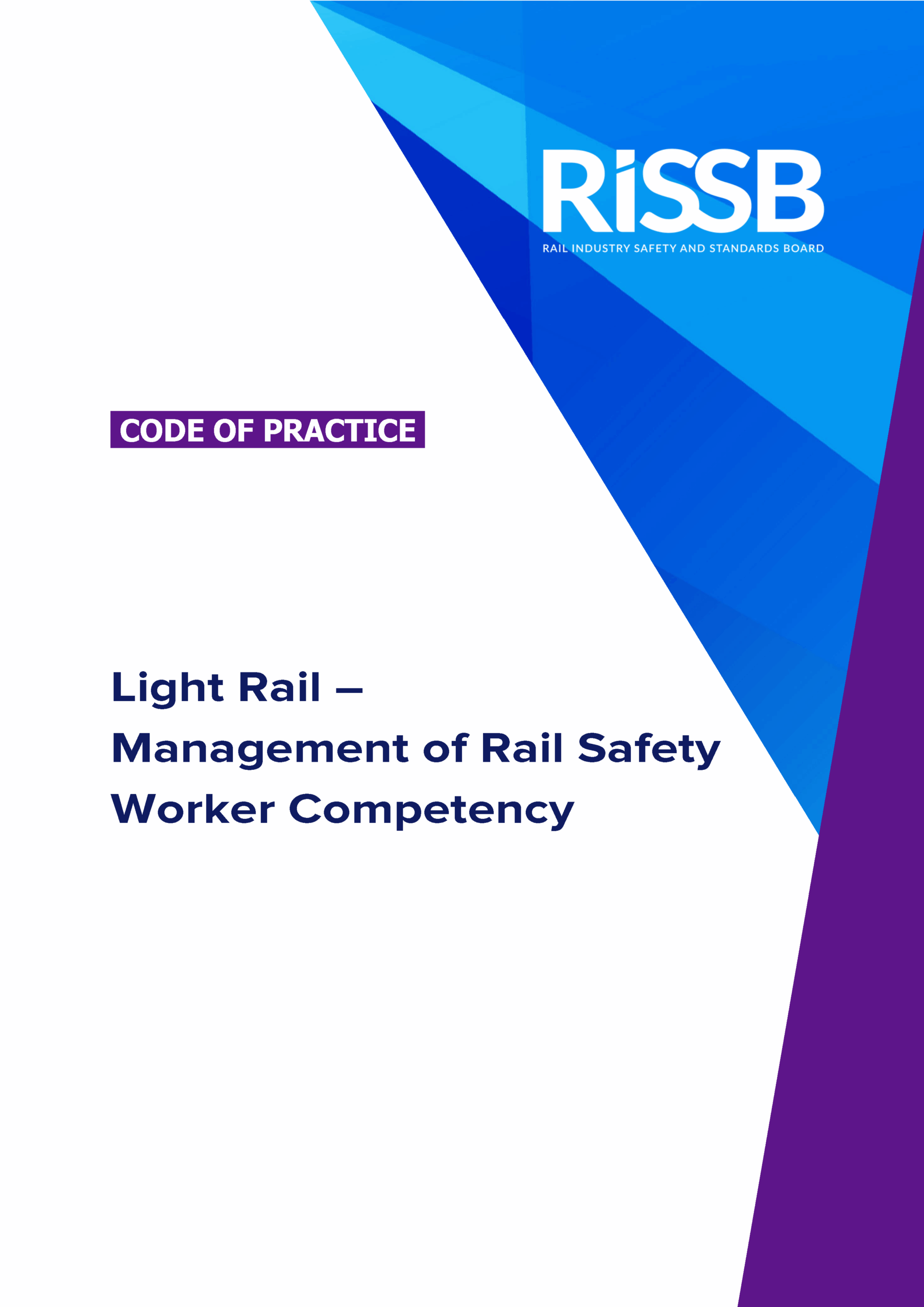This Code of Practice aims to harmonise tramway, LROs, maintainers (including infrastructure and overhead electrical line workers), and contractor RSW competence management.
Frequently asked questions
This Code of Practice aims to harmonise tramway, LROs, maintainers (including infrastructure and overhead electrical line workers), and contractor RSW competence management.
This Code of Practice (CoP) is designed to harmonise the management of rail safety worker competence for tramway and light rail operators, maintainers, and contractors. It provides a structured framework to help organisations determine, assess, and maintain the skills and knowledge required for safe and effective rail operations throughout the employment lifecycle.
The Code of Practice is intended to:
- Provide industry good practice for managing the competence of tramway and light rail safety workers (RSWs) across all employment stages, from recruitment to ongoing development.
- Establish a systematic, risk-based framework for determining, assessing, and maintaining RSW competence, including technical, non-technical, and safety-critical skills.
- Support regulatory compliance by aligning with the Rail Safety National Law (RSNL), Australian Qualifications Framework (AQF), and relevant road safety legislation.
The CoP helps improve safety and interoperability by:
- Ensuring all rail safety workers are assessed and certified as competent to perform their roles, reducing the risk of incidents
- Promoting consistent standards for competence management across different operators, supporting interoperability and workforce mobility
- Incorporating risk-based training needs analysis to address unique operational hazards in urban light rail environments
The Code of Practice manages several critical risks including:
- Incompetent or unqualified workers performing safety-critical tasks
- Gaps in competence due to changes in technology, procedures, or legislation
- Inadequate record-keeping and verification of worker competence
- Failure to identify or address degraded worker performance or post-incident competence gaps
Implementation should consider the following key areas:
Developing Selection Criteria:
- Conduct a risk-based job analysis to identify the technical and non-technical competencies required for each rail safety worker role
- Use these findings to establish clear selection and assessment criteria aligned with AQF and industry standards
Assessment Process:
- Implement a comprehensive assessment process that includes practical demonstrations, written/oral questioning, and simulated scenarios
- Ensure assessments are valid, reliable, and fair, and are conducted by qualified assessors
Preparing Applicants:
- Provide clear instructions and adequate preparation time for candidates prior to assessment
Ongoing Competence Management:
- Regularly review and update competence requirements in response to operational changes, incidents, or new regulations
- Maintain accurate, secure records of all training, assessments, and development activities
Continuous Improvement:
- Monitor workforce competence, conduct periodic audits, and implement development plans for those identified as ‘not yet competent’ or returning from extended leave or incidents
Receive Updates
Click the button below to register for product updates
Register Now



